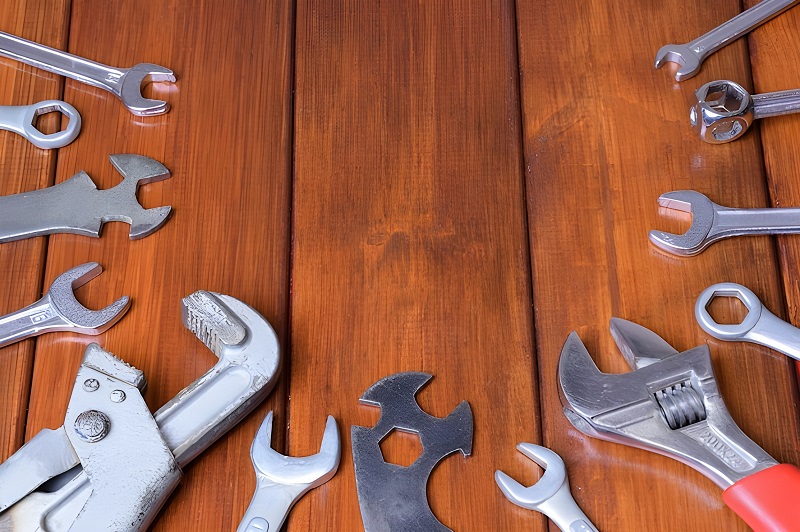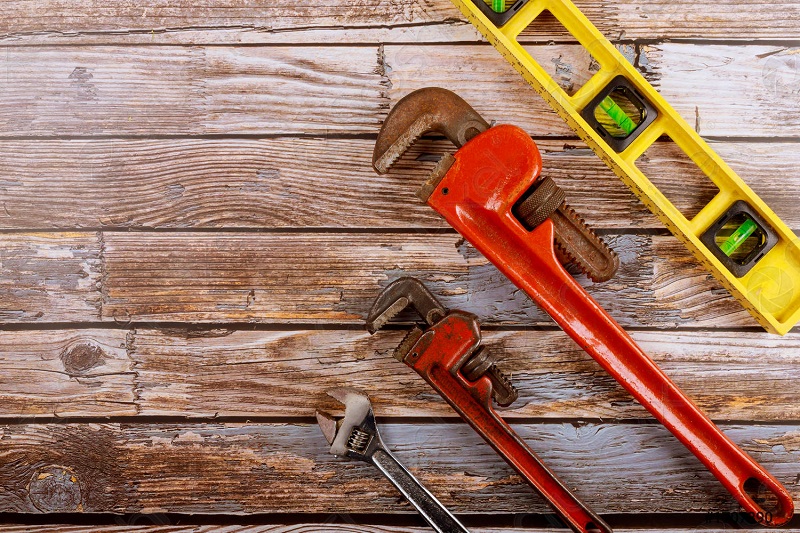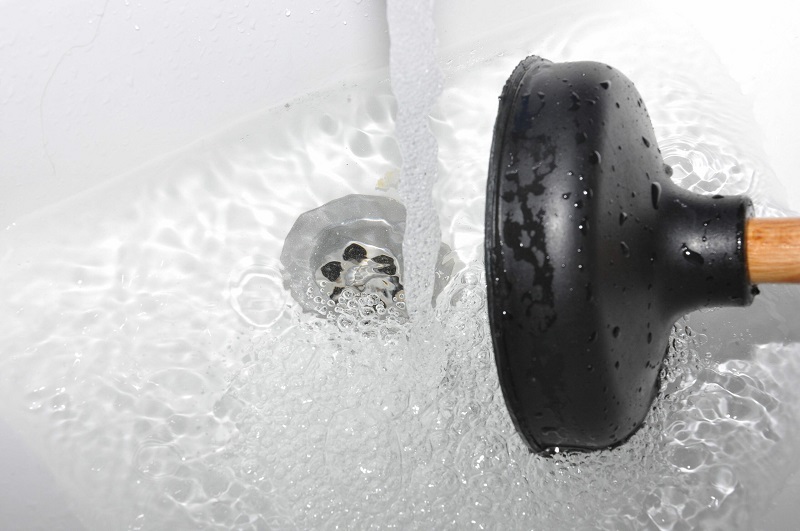When it comes to tools that have truly shaped the way we build, fix, and create, pipe wrenches hold a significant place in the toolkit of professionals across various industries. Whether you’re a plumber, mechanic, or construction worker, the trusty pipe wrench is your ally in ensuring things fit together just right. This article is your comprehensive guide to the diverse world of pipe wrenches – an exploration of their types, functionalities, and how they’ve evolved to meet the needs of different tasks.
What Are Pipe Wrenches? A Brief Overview
Before we delve into the specifics, let’s gain a broader understanding of pipe wrenches. These tools are known for their adjustable jaws, which allow them to grip pipes and fittings of various sizes firmly. The mechanics behind their grip lie in the serrated teeth that dig into the surface of the pipe as pressure is applied.
The Mechanics Behind Pipe Wrenches’ Grip
The grip strength of pipe wrenches is a result of their clever design. As pressure is applied, the jaws tighten around the pipe, providing a secure hold. The harder the wrench is turned, the tighter the grip becomes, making it possible to turn even the most stubborn fittings.
How Pipe Wrenches Have Evolved Over Time
Just like any tool, pipe wrenches have evolved to meet the changing demands of different industries. From simple, rigid designs to adjustable, ergonomic models, these tools have come a long way in terms of both functionality and comfort.
Common Types of Pipe Wrenches
Let’s now take a closer look at some of the most common types of pipe wrenches and their specific applications:
Straight Pipe Wrenches: Your Classic Go-To
Straight pipe wrenches are the quintessential pipe gripping tools. With their sturdy and uncomplicated design, they’re the go-to option for standard plumbing tasks.
Offset Pipe Wrenches: Navigating Tight Spaces
When pipes are positioned in tight or awkward spaces, offset pipe wrenches come to the rescue. Their angled jaws provide leverage and grip in confined areas.
End Pipe Wrenches: A Specialized Touch
End pipe wrenches are designed for gripping the end of a pipe, making them particularly useful for tasks where pipes need to be tightened or loosened without damaging the surface.
Introduction to Adjustable Pipe Wrenches
Adjustable pipe wrenches are the chameleons of the pipe wrench world. Their adaptability to different pipe sizes makes them incredibly versatile. Here are some of the advantages of using an adjustable pipe wrench:
- Versatility: Adjustable pipe wrenches can be used with a wide range of fastener sizes, making them a versatile tool for many different tasks.
- Compactness: Adjustable pipe wrenches are typically smaller and lighter than other types of wrenches, making them easier to carry and store.
- Ease of use: Adjustable pipe wrenches are relatively easy to use, even for people with limited hand strength or dexterity.
- Durability: Adjustable pipe wrenches are typically made from durable materials, such as steel or aluminum, making them a long-lasting investment.
Factors to Consider When Choosing Adjustable Pipe Wrenches
When selecting adjustable pipe wrenches, factors such as jaw capacity, overall size, and durability should be considered. This ensures the tool will perform optimally in your specific task.
Specialized Pipe Wrenches for Unique Tasks
Not all pipe wrenches are created equal. Some are tailored to handle specialized tasks:
Chain Pipe Wrenches: Conquering Large Diameter Pipes
Chain pipe wrenches use a chain instead of serrated jaws, allowing them to grip onto large diameter pipes effectively.
Strap Pipe Wrenches: A Gentle Grip on Delicate Surfaces
Strap pipe wrenches employ a strap instead of serrated jaws, making them suitable for delicate surfaces where a strong grip could cause damage.
Compound Leverage Pipe Wrenches: Extra Power When Needed
Compound leverage pipe wrenches utilize a gear system to multiply the applied force, making them ideal for tasks that require extra power.
Factors Influencing Pipe Wrench Selection
Choosing the right pipe wrench involves considering several crucial factors:
Material Matters: Choosing the Right Pipe Wrench Material
Pipe wrenches are constructed from various materials, each with its own set of advantages and disadvantages. The choice of material can impact the wrench’s durability and overall performance.
Size and Capacity: Matching the Wrench to the Job
Selecting a pipe wrench of the appropriate size and capacity ensures you have the necessary grip strength without sacrificing maneuverability.
Ergonomics and Comfort: A Long Day’s Work Made Easier
Ergonomically designed pipe wrenches reduce fatigue and strain during extended use, enhancing overall efficiency.
Mastering Pipe Wrench Techniques
Proper usage of pipe wrenches involves more than just gripping and turning. Here are some essential techniques:
Proper Pipe Wrench Usage: Dos and Don’ts
Using even pressure, positioning the wrench correctly, and avoiding over-tightening are essential dos when using pipe wrenches. Don’t include using pipe wrenches on fragile surfaces and using excessive force. Here are some dos and don’ts for proper pipe wrench usage:
Dos:
- Use the correct size wrench for the pipe you are working on.
- Make sure the wrench is in good condition and the teeth are not damaged.
- Position the wrench so that the jaws are gripping the pipe evenly.
- Apply force in the direction you want to turn the pipe.
- Use a backup wrench to prevent the pipe from turning in the opposite direction.
- Be careful not to overtighten the wrench, as this could damage the pipe.
- Inspect the pipe for damage after using the wrench.
Don’ts:
- Do not use a pipe wrench on anything other than round pipe and threaded fittings.
- Do not use a pipe wrench on hard, square, or hexagonal material.
- Do not use a pipe wrench as a lever, lifting device, or bender.
- Do not use a pipe wrench near flame or high heat.
- Do not use a pipe wrench with a bent or damaged handle.
- Do not apply side load to the handle of the wrench.
- Do not use a pipe wrench if you are not comfortable using it.
By following these dos and don’ts, you can help ensure safe and proper use of a pipe wrench.
Maintaining Your Pipe Wrenches for Longevity
Regular maintenance, including cleaning and lubrication, ensures that your pipe wrenches remain in optimal condition for years to come.
Techniques such as rocking the wrench and using a cheater bar can significantly enhance your efficiency when using pipe wrenches.
Beyond Traditional Pipe Wrenches: Modern Innovations
As technology advances, pipe wrenches have evolved to offer even greater functionality:
Aluminum Pipe Wrenches: Lightweight and Durable
Aluminum pipe wrenches provide durability without the added weight, making them a favorite among professionals who need to carry their tools around.
Quick-Adjust Pipe Wrenches: Speeding Up Your Workflow
Quick-adjust pipe wrenches feature a slide mechanism that allows for rapid jaw size adjustments, saving time on the job.
Electric Pipe Wrenches: Powered Precision in Plumbing
Electric pipe wrenches take the effort out of pipe gripping, providing powered precision for plumbing tasks.
Exploring Niche Pipe Wrench Variations
In addition to the standard types, there are a few specialized pipe wrenches designed for specific tasks:
Basin Wrenches: A Plumber’s Ally Under Sinks
Basin wrenches have a long, narrow design that makes them ideal for reaching nuts and bolts in tight spaces, such as under sinks.
Spud Wrenches: Tackling Bolts and Nuts Alongside Pipes
Spud wrenches combine the functionality of a pipe wrench with that of a wrench for bolts and nuts, making them versatile tools for various tasks.
Stillson Wrenches: A Historical Perspective on Pipe Gripping
Stillson wrenches, also known as pipe grips, are the predecessors of modern pipe wrenches and have a fascinating history.
Choosing the Right Pipe Wrench for You
Selecting the right pipe wrench involves more than just knowing the types available. Here’s how to make an informed choice:
Assessing Your Needs: Match the Wrench to the Task
Consider the specific tasks you’ll be performing and choose a pipe wrench that aligns with those requirements.
Investing Wisely: Quality Over Quantity
Opt for high-quality pipe wrenches that are built to last, even if they come at a slightly higher cost.
Where to Buy: Finding Reliable Pipe Wrench Suppliers
Look for reputable suppliers and retailers who offer a range of trusted pipe wrench brands and models.
Conclusion
The diversity of pipe wrenches mirrors the vast array of challenges they’re designed to overcome. From standard straight wrenches to specialized electric models, each type has its unique role to play. By gaining a deeper understanding of the various types and their applications, you empower yourself to select the right tool for the job.
Frequently Asked Questions
Q: Can I use a pipe wrench on delicate materials?
A: While pipe wrenches are designed for robust gripping, there are specialized wrenches like strap pipe wrenches that are gentler on delicate surfaces.
Q: Are electric pipe wrenches suitable for all plumbing tasks?
A: Electric pipe wrenches excel in tasks requiring precise and powered gripping. However, manual pipe wrenches might be better for more delicate jobs.
Q: How do I maintain the longevity of my pipe wrenches?
A: Regular cleaning, lubrication, and avoiding excessive force can extend the lifespan of your pipe wrenches.
Q: Are aluminum pipe wrenches as durable as their steel counterparts?
A: Yes, aluminum pipe wrenches offer durability comparable to steel wrenches while being significantly lighter.
Q: What is the advantage of offset pipe wrenches?
A: Offset pipe wrenches are designed to provide leverage in tight spaces where a straight wrench might not fit comfortably.




